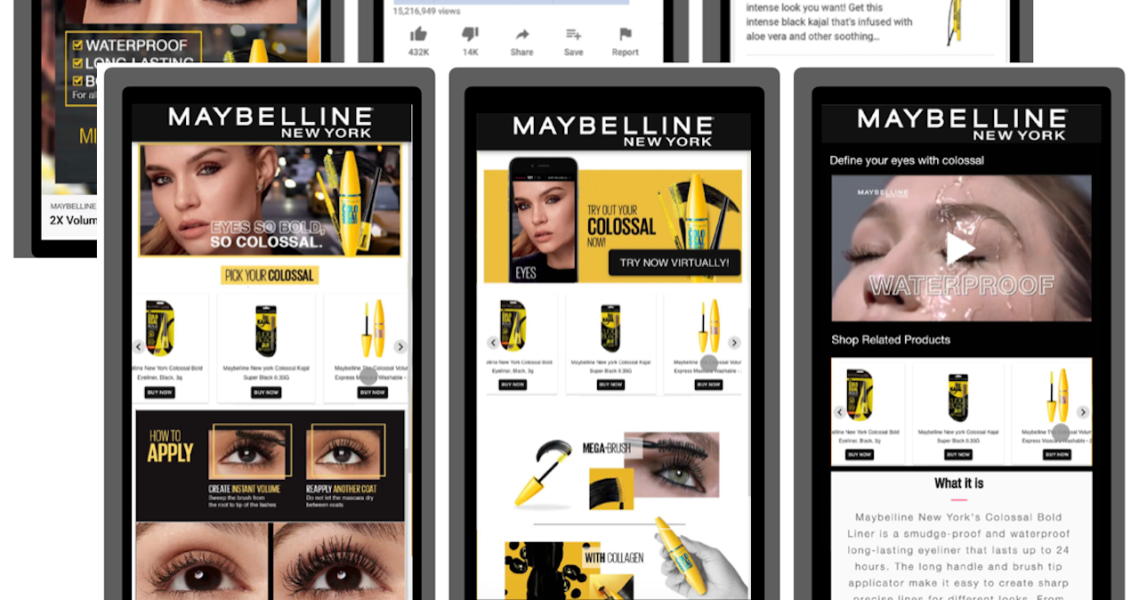For many mass beauty brands that had once relied on traditional in-store experiences, the shift to e-commerce was already happening pre-pandemic. One year in, what was once a forward-thinking strategy is now a necessity.
L’Oréal India, for example, has facilitated a shift for brands in this segment, like Maybelline and L’Oréal Paris, to e-tailers such as Nykaa, Amazon and Flipkart. It has been investing heavily in content-rich social ads for its consumer brands.
“Digital and e-commerce has been at the forefront of our expansion into India, especially over the last few years. So everything that we do is with a digital-first mindset. The intent here is really to bring the best of beauty tech,” said Anil Chilla, chief digital officer of L’Oréal India. “We had been seeing the rise of e-commerce even before the pandemic, and the pandemic only accelerated the whole phenomenon.” He added that one in five customers purchased beauty products online for the first time during the pandemic.
Thus, brand awareness has been a key digital focus in India, where the conglomerate’s 26-year presence makes it a comparatively “new entrant” to the market, said Chilla. “For the scale of India, that’s still a short time. For us, digital is the key driver which helps us leapfrog into or compensate for the distribution and strength [of competitors].” He noted that almost half of the sales are coming from Tier 2-3 cities (based on population). “Digital and e-commerce are helping [people] find [brands] faster, and helping them get access to these brands. That’s where our priority is.”

Advertising has been especially focused on seamless e-commerce integration. L’Oréal India brands such as Maybelline have implemented ads across platforms that direct to sophisticated landing pages that link to purchase on top platforms for purchasing beauty online in India including Nykaa, Flipkart and Amazon. Landing pages can include video content, AR try-on and product listings with prices that are automatically updated on the landing page if they change.
“Traditional international brands like Maybelline, L’Oréal and others have shifted a lot of their attention to digital, both for advertising, which was already a trend, and commerce,” said Girish Ramachandra, CEO of digital advertising agency Shopalyst, which developed the ad landing pages for L’Oréal India brands. The company works with 400 brands globally and is frequently used by mass brands without their own e-commerce shops to create a DTC-like experience with links to multi-brand e-tailers. “We’ve seen a lot of interest from traditionally non-digital brands shifting over to digital in the last few months,” said Ramachandra. In addition to the landing pages, the company offers a cross-platform ad builder and data tracking.
“India is also a market where beauty is nascent, so a lot of consumers are new to the category,” said Chilla. “Therefore, they are in the process of learning, which means how-to video content becomes extremely important.” Maybelline created video ads for YouTube that appeared on relevant content such as beauty tutorials.
L’Oréal India has also prioritized AR try-on, which was already the case when L’Oréal Group acquired ModiFace in 2018. Since the pandemic began, the company has doubled down on this technology.
“Pre-Covid, makeup was all about going to a counter, trying it on, touching, feeling and applying the product, and then getting the right shade or color,” said Chilla. “What we’re increasingly seeing is that consumers are open to trying out new digital or virtual experiences, and that’s where our forte lies.” He added that L’Oréal brands have seen a higher conversion rate from AR try-on across the entire makeup category.




